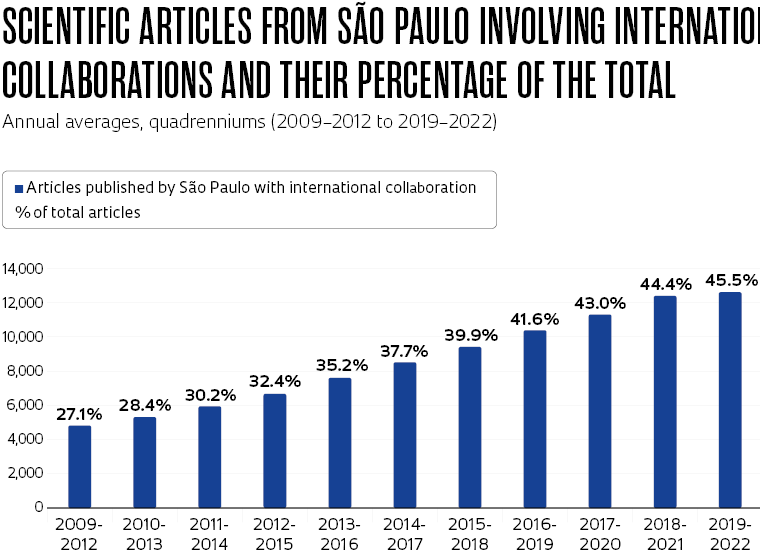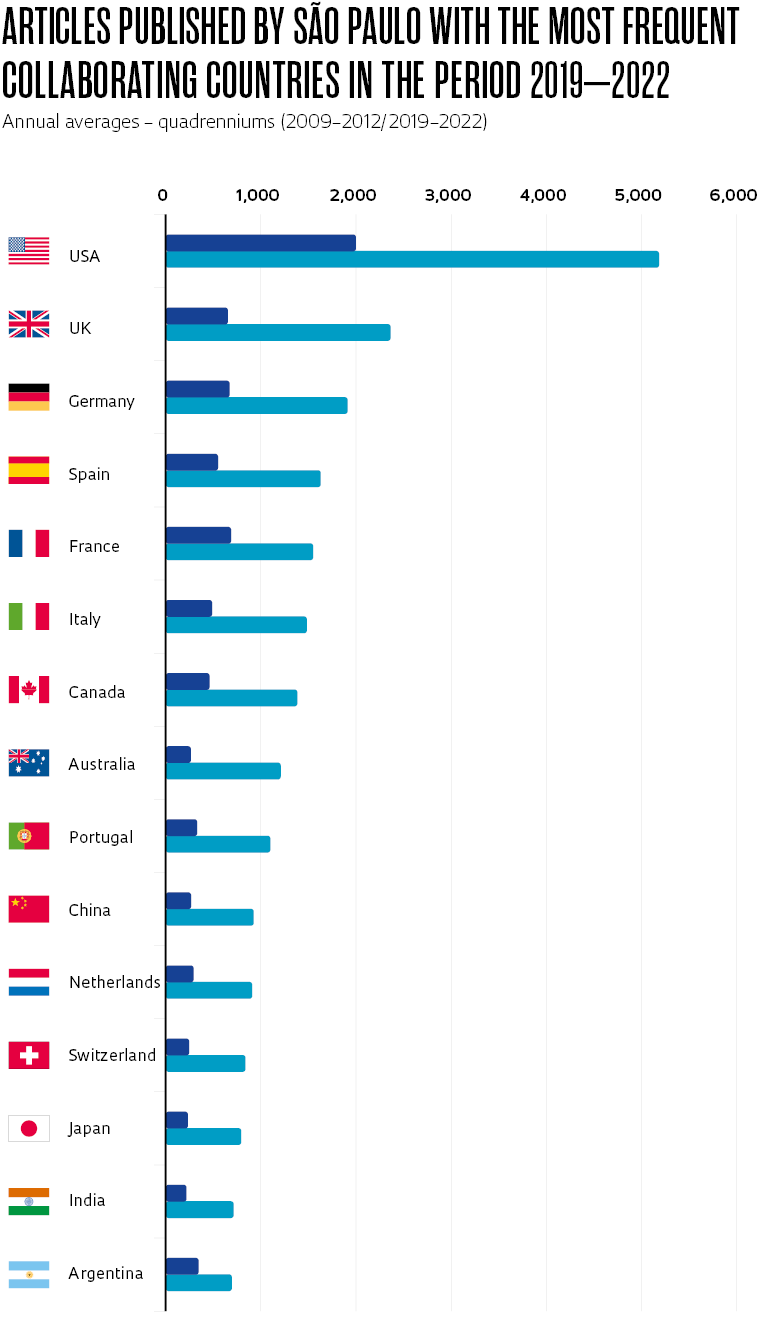- In the last 10 years, the percentage of scientific articles published1,2 by authors based in São Paulo that involved international collaborations increased continuously and significantly
- The percentage of total papers involving international collaborations increased from 27.1% to 45.5% between the four-year periods of 2009–2012 and 2019–2022
- In absolute numbers3, the increase was from 4,824 of 17,824 total articles with authors based in the state in the first period to 12,617 of 27,732 total articles in the second
- Growth of collaborative articles (162%) over the period was almost three times greater than total growth (55%)
DATA
International collaborations in scientific articles published by São Paulo–based researchers

- Collaborations grew significantly with countries that most frequently collaborate with researchers from São Paulo, including their most common partner: the USA. The country partnered with São Paulo on 5,185 papers in the 2019–2022 quadrennium, representing 41.1% of all articles published by the state that involved international collaboration4
- The country whose participation grew the most was Australia, which rose from 268 papers to 1,212, an increase of 352%, moving from 12th position in the list to 8th
- France (+125%) and Argentina (+100%) were also involved in more coauthorships, but they increased more slowly than other countries, causing them to fall down the list, with France going from 2nd to 5th place and Argentina from 8th to 15th

Notes (1) Papers published as an article, proceedings paper, or review according to Clarivate’s Web of Science database. (2) A published article is considered an international collaboration if it includes authors based in other countries, in addition to authors based in the state of São Paulo. (3) Absolute values correspond to annual averages for the period in question. (4) A published article can have authors from several countries, resulting in the sum of the countries possibly being greater than the total number of published articles involving international collaboration for São Paulo. Sources Incites/Web of Science/Clarivate. Data accessed on 04/04/2023 Prepared by the FAPESP Studies and Indicators Department (DPCTA)
Republish